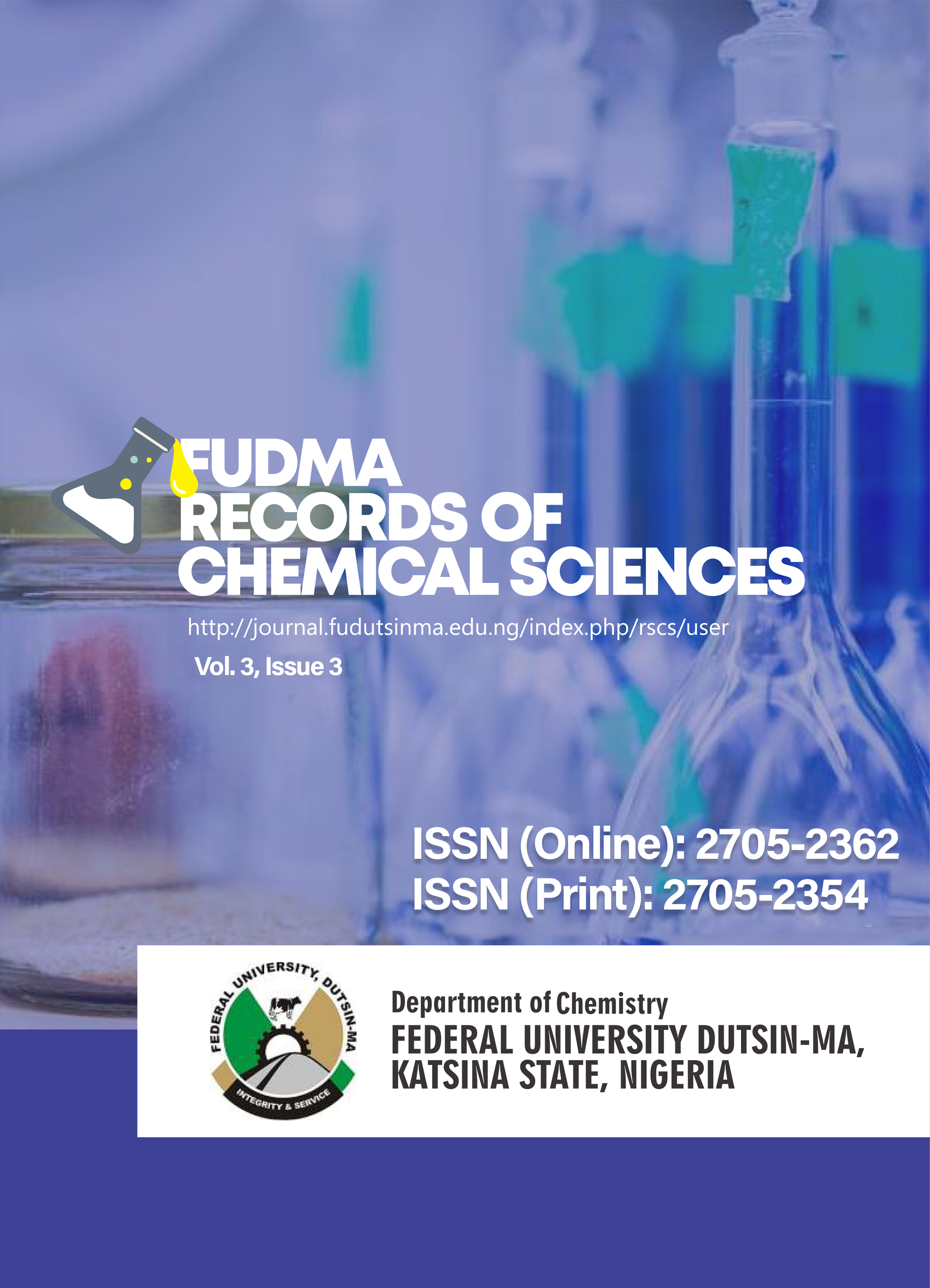Quantitative Study on the Phytochemical of Zingiber officinale (ginger) and Allium Cepa (onion) Spices Used as Condiments in Katsina State.
DOI:
https://doi.org/10.33003/Keywords:
PhenolsAbstract
The present study aimed to screen for qualitative and quantitative bioactive
constituents of ethanolic extract of two commonly used spices across Katsina State;
namely Ginger (Zingiber officinale) and onion (Allium cepa) The qualitative
phytochemical screening of these spice extracts confirms the presence of various
phytochemicals like alkaloids, phenol, glycosides, terpenoids, flavonoids, saponin,
anthraquinone, reducing sugar, steroids, and tannins. The quantitative phytochemical
screening of the aqueous extract of the studied spices revealed that alkaloids were
found to be the most abundant phytochemical in all the spices. Zingiber officinale
(12.30 %) Allium cepa (11.30 %). The spices were potential sources of
phytochemicals which could encourage their use as dietary Supplements to maintain
and promote a healthy life. the quantitative study of the phytochemicals in Zingiber
officinale and Allium cepa reveals a complex interplay of bioactive compounds that
contribute to its health-promoting properties.






